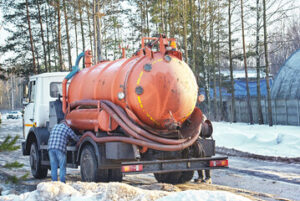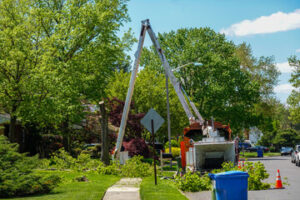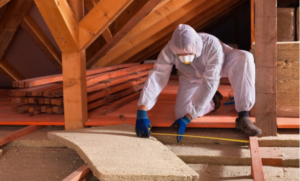A Security Camera is a surveillance system that can help prevent costly theft, robberies, and other crimes. It’s a great deterrent for criminals who know they are being recorded.
Most big box and warehouse stores sell consumer-grade cameras in sets of 8 or 16 with a video recorder for under a thousand dollars. Click the Construction Site Security Cameras to learn more.

Analog cameras are the old-school wired security camera systems that have existed for decades. Known for their durability and longevity, these cameras offer several advantages that make them the choice of many businesses and homes:
Cost-Effective: Since they don’t transmit video footage over the internet, wired analog camera systems can be installed farther away from your Wi-Fi router without sacrificing video quality. Additionally, since they don’t require an internet connection to function, analog systems don’t experience lag or glitches due to poor internet connectivity.
The unsung hero of wired analog surveillance is the coaxial cable, which serves as a dependable link between your camera and your DVR. This dance between camera and DVR transforms into a surveillance symphony, where simplicity and efficacy coexist.
Wired analog cameras are not able to be streamed remotely, but they can be connected to a recorder that features wireless capabilities for remote streaming. Since analog cameras do not feature an internet address, they can only be streamed from the DVR that receives their video footage.
These cameras can be upgraded to a high-definition system with a simple software upgrade, making them more competitive with the newer digital technologies. The downside is that they are more expensive upfront and have a lower resolution, meaning they may not be capable of capturing detailed information. However, for a business or home with a tight budget, an analog security camera system offers the best value. Analog camera models usually include a lens, optical image sensor, motherboard, power source and mounting accessories. Typically, the appropriate transformer with connecting wire is included as well. This is a necessary component for converting 220V to 12V, which powers the device.
Wired Cameras
Wired security cameras connect to a central hub through wires, and can communicate with the outside world over phone lines or through Wi-Fi. They can also use a power cord to power their battery-operated sensor. When a camera has both a wired connection and a battery-operated option, it is often referred to as “Wire Free”.
Wired cameras work by transmitting video and audio signals through coaxial cables or CAT5 or CAT6 Ethernet cables to the recorder, which can then save footage on the camera’s hard drive or send the data over a network to an NVR or VMS. They can also be plugged into an outlet for continuous power or run on a power supply like PoE (Power Over Ethernet) which provides both data and power to the camera over a single cable.
The most notable advantage of a wired camera is the reliability of their connection. Because they are not reliant on wireless signal drops and don’t rely on the Internet for their function, they can provide reliable surveillance even if your home or business loses its Internet service.
Additionally, most wired models have a battery backup to ensure continuous operation in the event of an outage or other power failure. Some cameras are equipped with a solar panel that mounts near the camera and uses sunlight to constantly charge the battery pack. This can be especially helpful for hard-to-reach installations or in areas where it might be difficult to access the camera’s user interface. Lastly, due to the wiring constraints, many wired cameras are fixed in place once they are installed, meaning residents will have to call a professional electrician for any issues or to install new equipment if they want to reposition their camera.
Wireless Cameras
The best wireless cameras offer high definition video, motion detection and two-way audio. They also provide smart home compatibility and the convenience of a livestream from your mobile device. Unlike wired cameras, wireless and wire-free security camera systems use Wi-Fi to transmit footage and are typically powered by batteries or renewable energy like solar power.
A wireless security system sends a signal from the camera to a receiver, which can be located in your house or outside on a hub attached to the camera through a cable. Then the signal is either stored locally on the hub for later viewing or sent to a server where you can access it remotely.
This system simplifies the setup and installation process. Since there are no wires, you can mount your camera in a strategic location without worrying about the length of the wiring or where to run it. If you’re unsure about how to mount your camera, it may be better to hire a professional to set up the system for you.
In addition to being easier to install, wire-free security cameras are less invasive. They don’t require a continuous power source, so you can place them far from an outlet and only have to change the batteries every few years. Alternatively, some battery-powered models can record onto an SD card for easy retrieval without requiring an internet connection at all.
In addition to preventing break-ins, security cameras are also great for keeping an eye on family members when you’re away. With the help of smart home technology, you can use voice commands to reposition cameras and adjust their zooms or create routines that turn on your lights if the camera detects motion.
Night Vision
If you’re looking to protect your property and family after dark, security cameras with night vision are the answer. The best options have powerful IR illumination that allows them to see in total darkness. They also feature resolution that is high enough to capture facial features and license plate numbers clearly.
In addition, look for a camera with a wide field of view that can cover the area you’re protecting. The lens’ aperture size controls how much light is captured and the image quality of the footage. For example, a camera with a larger lens aperture can gather more light and produce clearer images at night.
The sensor sensitivity is another important factor. The lower the sensitivity is, the less light your camera can capture. A low sensitivity may result in blurry footage. To avoid this, choose a camera with a high sensitivity.
There are several factors that determine how far your security camera can see at night, including the type of camera, location, and lighting conditions. A camera with a high resolution is better equipped for nighttime surveillance, as it will provide more details and clarity. You should also choose a camera with a large sensor size, as this will allow the camera to gather more light and create sharper images at night.
Some experts say that color night vision is the best option because it provides more detail and is easier to see than black-and-white footage. Others disagree and argue that color footage can reveal the camera’s position, inviting tampering or other criminal activity. If you’re interested in a night vision security camera, consider pairing it with other security sensors such as door and window sensors, garage door sensors, or wireless doorbells.
PoE
PoE cameras allow you to combine power and network connectivity over a single ethernet cable. This simplifies installation and reduces costs. In addition to lowering installation costs, the ability to run power over Ethernet also helps improve camera reliability by eliminating the need for extra power sources and wires that can create electrical interference.
When selecting a PoE security camera, consider its field of view (FOV), zoom support and night vision capabilities. A higher resolution camera will provide better video quality, while a wider FOV will help capture more of your property. A camera’s zoom capability can be optical or digital and range from a wide to telephoto lens. Night vision allows you to see what is happening on your premises even in low-light conditions.
With PoE technology, a camera’s voltage is transmitted over the ethernet connection and doesn’t require an additional power source. A PSE (Power over Ethernet switch or injector) will detect the devices connected to it and offer the appropriate amount of power. This will ensure that your cameras receive only the required power and prevent overcharging.
If you are upgrading an existing LAN to PoE, the best choice is a PoE switch with built-in power distribution features. An alternative is a PoE injector, or midspan, which can be installed between your router and your camera to add compatibility. The device will convert the high-voltage input to lower camera-compatible levels and deliver power as needed. These are an economical option, but will not be as powerful as a PoE switch. Also, keep in mind that because they are sending and receiving electricity over the same ethernet connection, PoE devices dissipate more heat, which can limit their lifespan.








